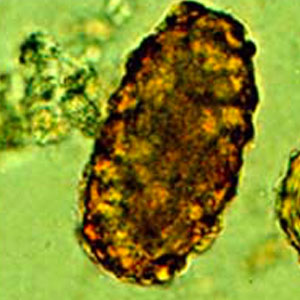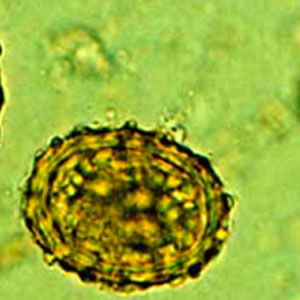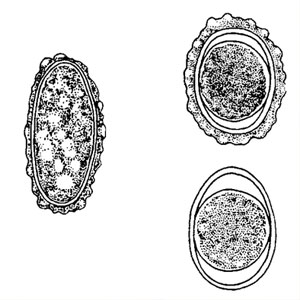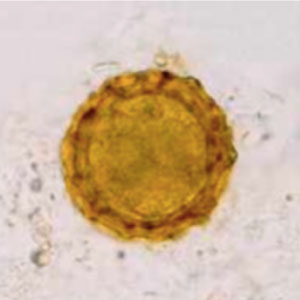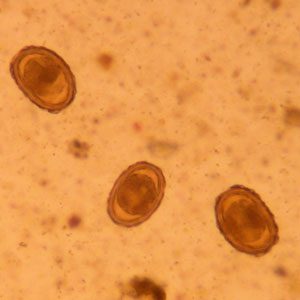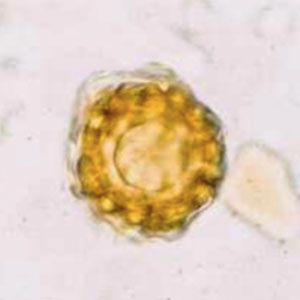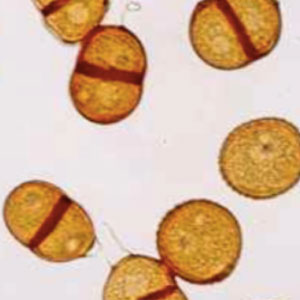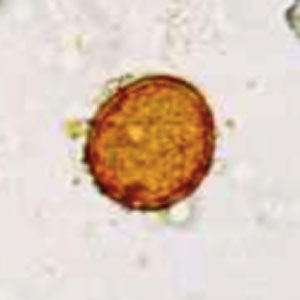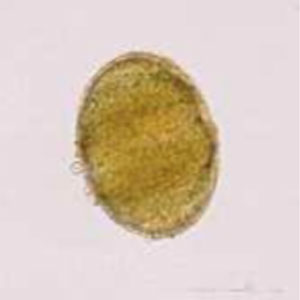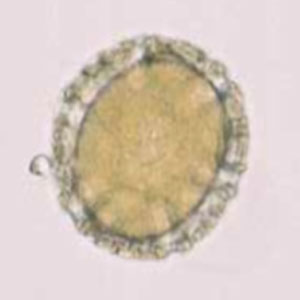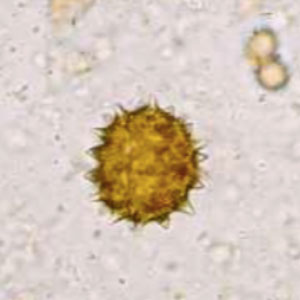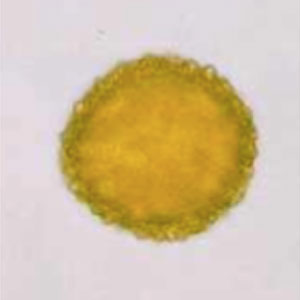Ascaris is a genus of nematode of the order Ascaridida. These parasites affect the small intestine of mammals and are of specific importance in non-human primates. The most reported species of Ascaris in non-human primates is Ascaris lumbricoides (Strait et al., 2012).
Epidemiology
Ascaris spp. are cosmopolitan and have been described in all types of non-human primates except prosimians (Strait et al., 2012).
Description
Ascaris eggs are oval and most often have an irregular outer surface (Petithory et al., 1995). Two forms of the parasite can be found:
- Fecundated eggs: they measure 45 to 75 µm in diameter and contain a non-vermiform embryo of varying density which occupies almost all the egg’s surface. One or more blastomeres can also be present according to the state of maturation of the egg. This form of egg often lacks at least part of its outer membrane (Petithory et al., 1995).
- Non-fecundated eggs: they are longer, measuring 78 to 105 µm long and 38 to 55 µm large. Their content is often difficult to distinguish (Petithory et al., 1995).
Differential diagnosis
Spores can be mistaken with Ascaris eggs, namely downy mildew spores (Peronospora pisi). However, these spores are smaller in size (around 40 µm) and have a thicker outer sheath (Petithory et al., 1995).
Rust spores can also be mistaken with Ascaris eggs
- Dandelion rust spores (Puccinia variabilis): these spores are uni-to-tricellular. The unicellular form is often mistaken with Ascaris eggs. However, it is smaller in size (ranging from 25 to 40 µm in diameter), is round to oval, and has a thinner external convoluted membrane (Petithory et al., 1995).
- Sorrel rust spores (Uredo bifrons): these spores are round to oval and brown. However, their diameter is smaller than the one of Ascaris eggs (ranging from 22 to 28 µm in diameter), allowing their differentiation (Petithory et al., 1995).
Pollens can also be mistaken with Ascaris eggs
- Sage pollen seeds (Salvia sclarea): these pollen seeds measure between 40 and 50 µm in diameter. However, their outer membrane is thinner than the one of Ascaris eggs (Petithory et al., 1995).
- Basil pollen seeds (Ocimum basilicum): these pollen seeds measure between 60 and 65 µm in diameter. However, their outer membrane is green and more irregular than the one of Ascaris eggs (Petithory et al., 1995).
- Safflower pollen seeds (Carthamus tincorius): these are round pollen seeds of 55 to 60 µm in diameter, with an irregular outer membranes and small spicules. However, they are normally greener and more refringent than Ascaris eggs (Petithory et al., 1995);
Clinical significance
Ascaris infections are usually asymptomatic.
Prophylaxis and treatment
As some Ascaris spp. are transmissible to humans, hygienic measures need to be taken in case of diagnosis.
Various treatments have been described to treat Ascaris spp. infections in non-human primates, namely:
- Piperazine salts: 100-400 mg/kg once (Mehlhorn, 2016);
- Mebendazole: 22mg/Kg PO q24h during 3 days (Strait et al., 2012);
- Pyrantel: 11 mg/kg PO q24h during 10 to 14 days (Strait et al., 2012).

